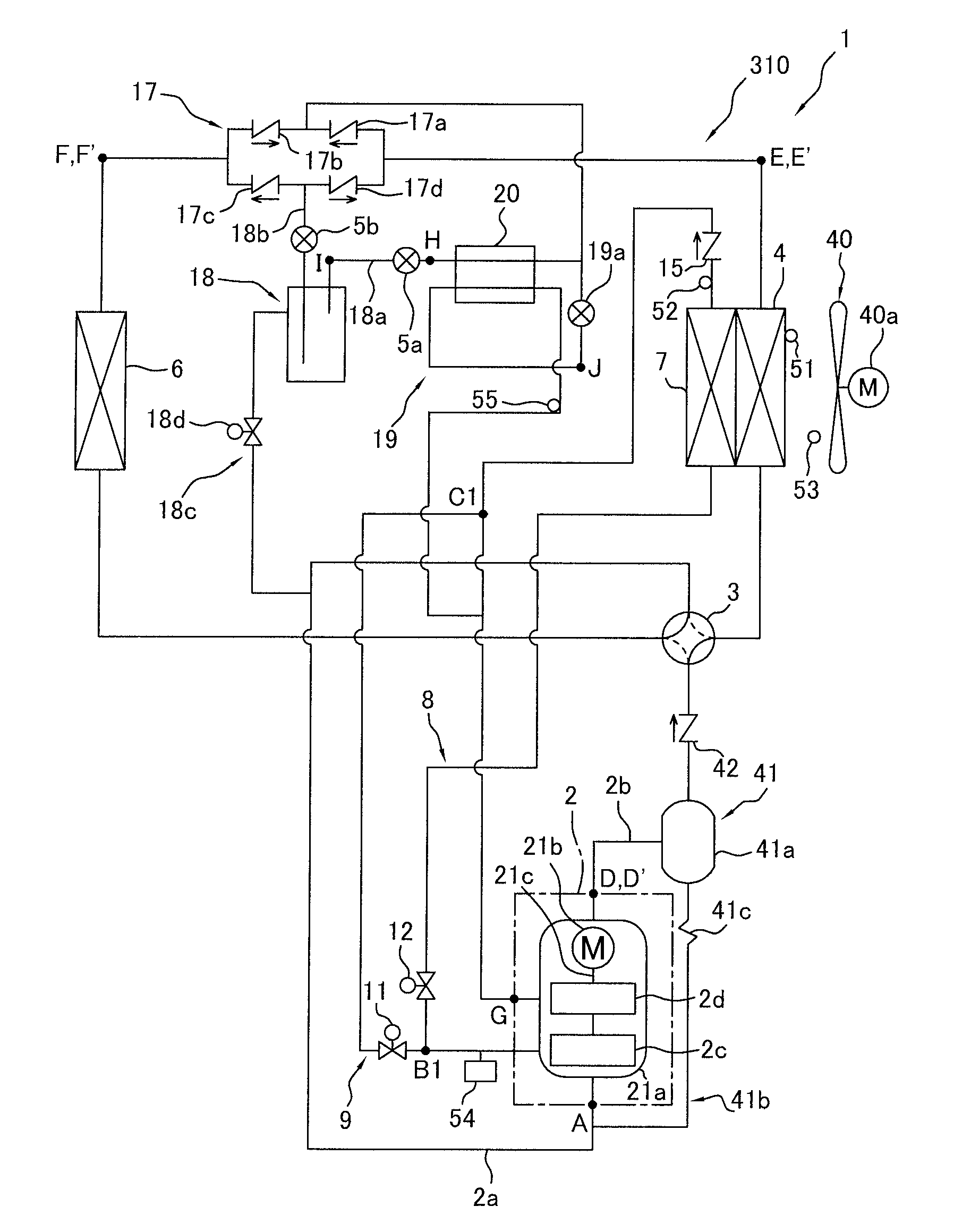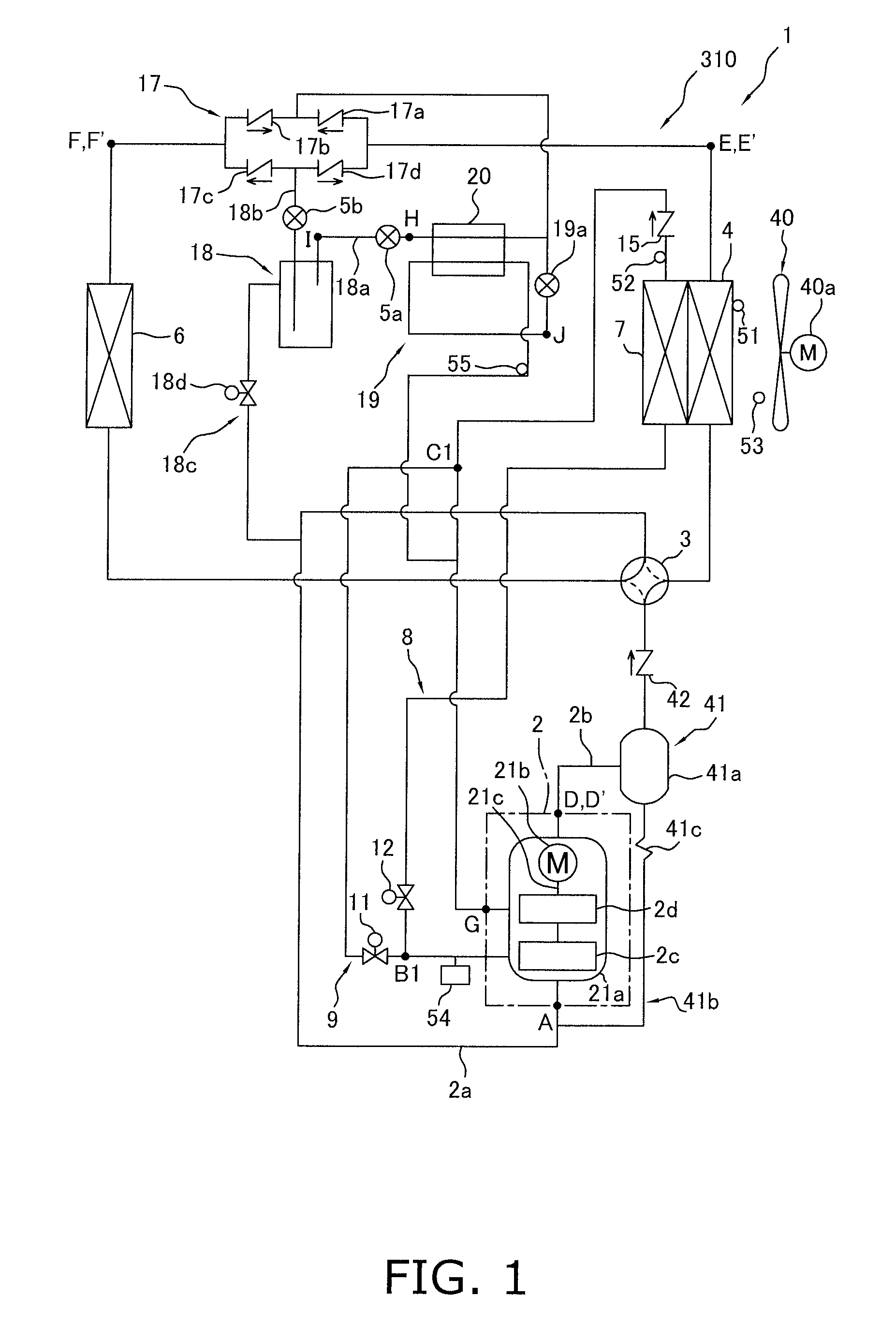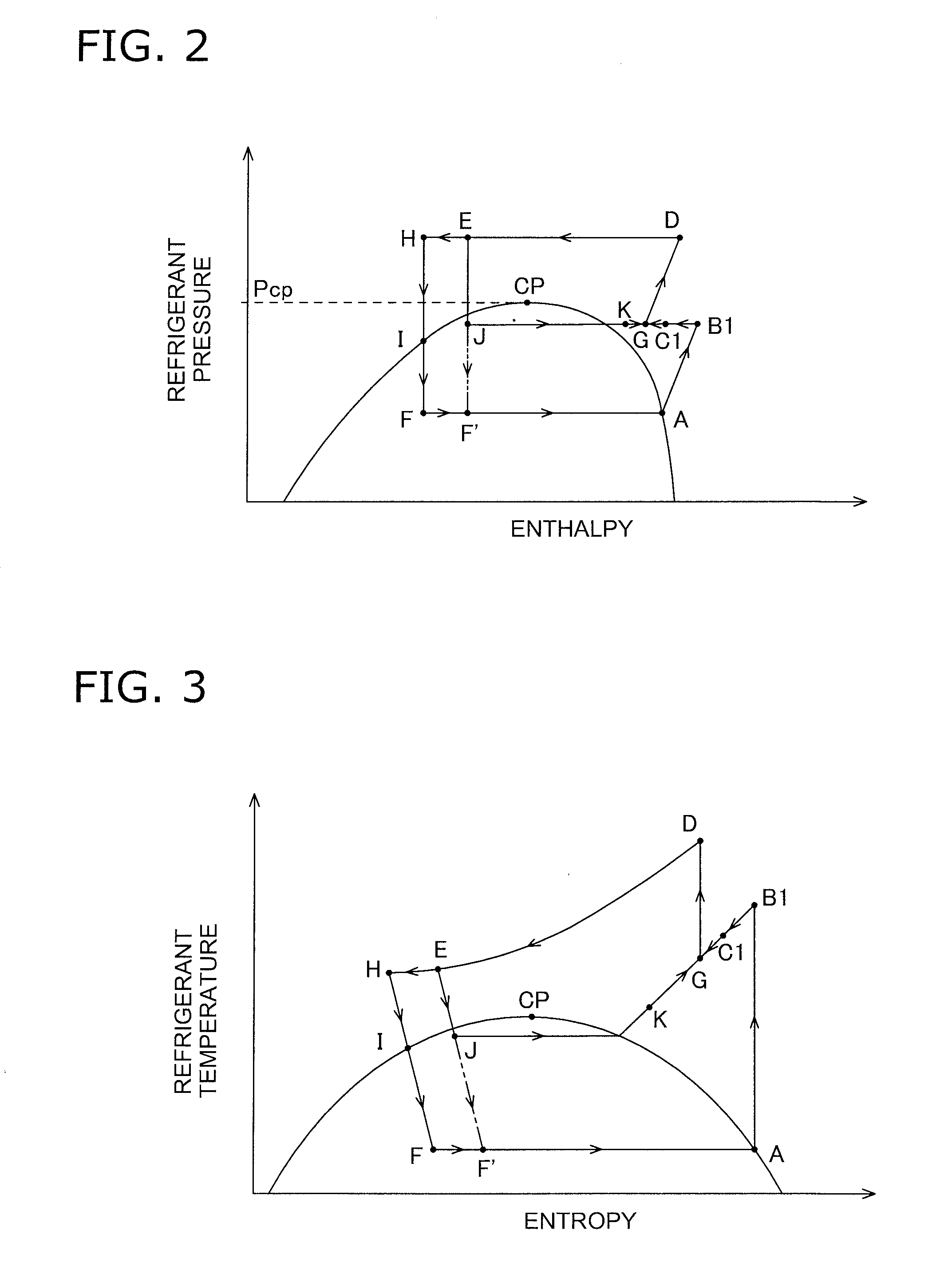Refrigeration apparatus
a technology of refrigerating apparatus and heat source, which is applied in the direction of refrigeration components, mechanical apparatus, lighting and heating apparatus, etc., can solve the problems of difficult to achieve high operating efficiency, large heat radiation loss of heat exchanger, and the difference in temperature between the refrigerant, etc., to suppress the reduction of defrosting capacity, reduce the density of refrigerant drawn into the second-stage compression element, and keep the defrosting capacity from being reduced
- Summary
- Abstract
- Description
- Claims
- Application Information
AI Technical Summary
Benefits of technology
Problems solved by technology
Method used
Image
Examples
modification 1
(3) Modification 1
[0098]In the defrosting operation in the present embodiment described above, although only temporarily until defrosting of the intercooler 7 is complete, the refrigerant flowing through the intercooler 7 condenses and the refrigerant drawn into the compression element 2d becomes wet, presenting a risk that wet compression will occur in the second-stage compression element 2d and the compression mechanism 2 will be overloaded.
[0099]In view of this, in the present modification, as shown in FIG. 9, in cases in which it is detected in step S7 that the refrigerant has condensed in the refrigerant flowing through the intercooler 7, intake wet prevention control is performed in step S8 for reducing the flow rate of refrigerant returned to the second-stage compression element 2d via the second-stage injection tube 19.
[0100]The decision of whether or not the refrigerant has condensed in the refrigerant flowing through the intercooler 7 in step S7 is based on the degree of s...
modification 2
(4) Modification 2
[0102]In the above-described embodiment and modifications thereof, a two-stage compression-type compression mechanism 2 is configured from the single compressor 21 having a single-shaft two-stage compression structure, wherein two compression elements 2c, 2d are provided and refrigerant discharged from the first-stage compression element is sequentially compressed in the second-stage compression element, but another possible option is to configure a compression mechanism 2 having a two-stage compression structure by connecting two compressors in series, each of which compressors having a single-stage compression structure in which one compression element is rotatably driven by one compressor drive motor, as shown in FIG. 11, for example.
[0103]The compression mechanism 2 has a compressor 22 and a compressor 23. The compressor 22 has a hermetic structure in which a casing 22a houses a compressor drive motor 22b, a drive shaft 22c, and a compression element 2c. The co...
modification 3
(5) Modification 3
[0113]The refrigerant circuit 310 (see FIG. 1) and the refrigerant circuit 410 (see FIG. 12) in the embodiment and modifications described above have configurations in which one usage-side heat exchanger 6 is connected, but alternatively may have configurations in which a plurality of usage-side heat exchangers 6 is connected and these usage-side heat exchangers 6 can be started and stopped individually.
[0114]For example, the refrigerant circuit 310 (FIG. 1) which uses a two-stage compression-type compression mechanism 2 may be fashioned into a refrigerant circuit 510 in which two usage-side heat exchangers 6 are connected, usage-side expansion mechanisms 5c are provided corresponding to the ends of the usage-side heat exchangers 6 on the sides facing the bridge circuit 17, the receiver outlet expansion mechanism 5b previously provided to the receiver outlet tube 18b is omitted, and a bridge outlet expansion mechanism 5d is provided instead of the outlet non-return...
PUM
 Login to View More
Login to View More Abstract
Description
Claims
Application Information
 Login to View More
Login to View More - R&D
- Intellectual Property
- Life Sciences
- Materials
- Tech Scout
- Unparalleled Data Quality
- Higher Quality Content
- 60% Fewer Hallucinations
Browse by: Latest US Patents, China's latest patents, Technical Efficacy Thesaurus, Application Domain, Technology Topic, Popular Technical Reports.
© 2025 PatSnap. All rights reserved.Legal|Privacy policy|Modern Slavery Act Transparency Statement|Sitemap|About US| Contact US: help@patsnap.com



